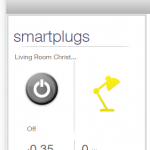
AlertMe Home is the underlying technology used by Lowe’s Iris
Back in September of 2014, AlertMe.com Ltd., the company that created AlertMe Home, the underlying technology used by the Lowe’s Iris system released Omnia, it’s next generation of connected home automation technology. AlertMe Omnia is hyped as a highly scalable, inter-operable and open platform ready to meet the challenges of the rapidly evolving connected home space.
Omnia improves upon the AlertMe Home platform by incorporating a wide range of technological enhancements including “brain in the cloud” and “brain in the home” portability allowing devices to connect directly to the cloud (IP to the Edge), bypassing the hub if so chosen.
Among the cornerstone features is the introduction of Synthetic Devices; constructs that combine multiple physical devices (or their specific features) into new virtual devices which exist purely in software. A synthetic device, or “hublet” as they are referred to in the new version 6 API, are devices that operate with the same level of interoperability and features as any physical device in the system would.
Omnia also introduces Sensor Data Fusion; a set of algorithmic rules blended to create a level of intelligence not previously available on the AlertMe Home or Iris platforms. Sensor Data Fusion combines sensory data from a wide variety of devices within the system coupled with external data sources bringing intelligent decision-making capabilities to the end user.
Unsurprisingly the v6 API is not yet complete, but unfinished documentation leaked to the web suggests that through the API it will be possible to perform operations such as creating synthetic (virtual) devices, creating service partners, and loading device drivers to the hub.
While Omnia may be a huge leap forward for the company, the question remains; will Lowe’s adopt the Omnia platform in it’s next generation Hub expected in the first quarter of this year? Time will tell and we shall be keeping a very close watch on upcoming Iris developments.

